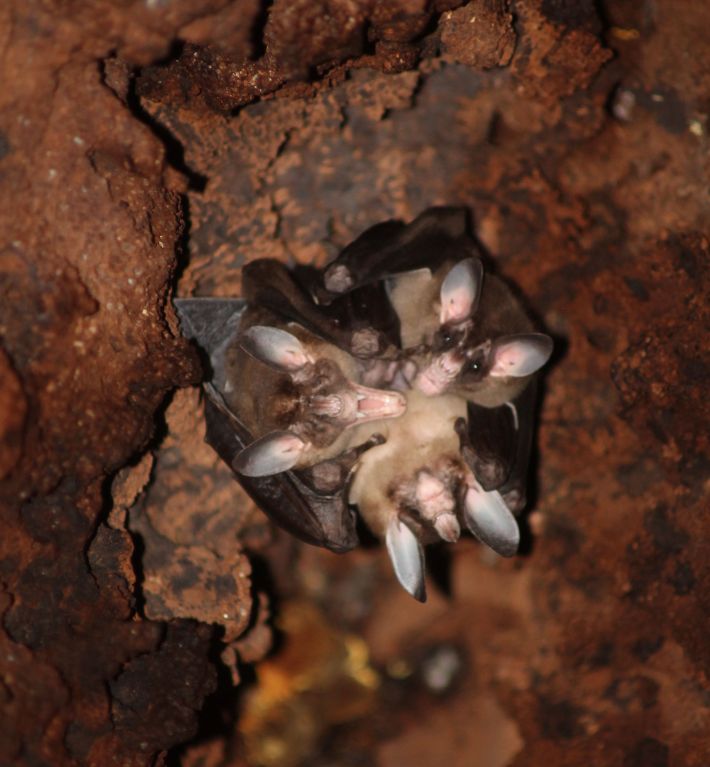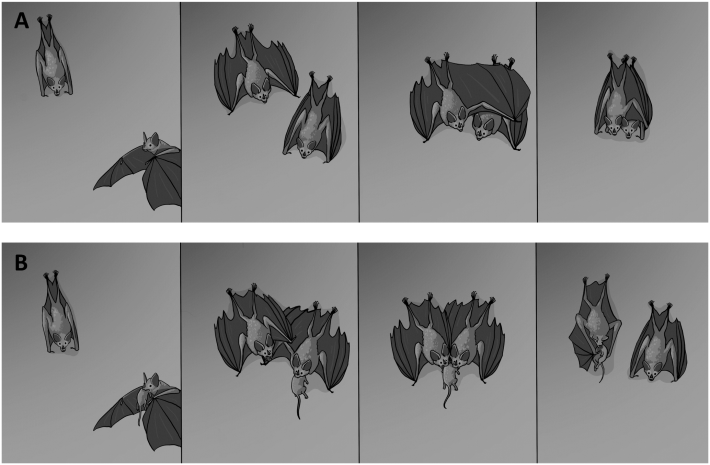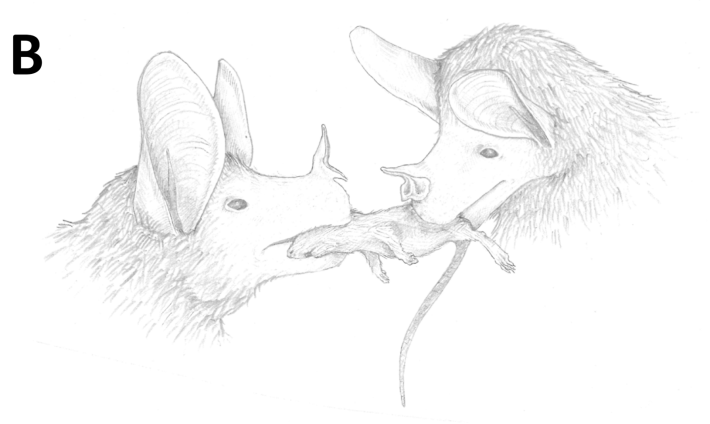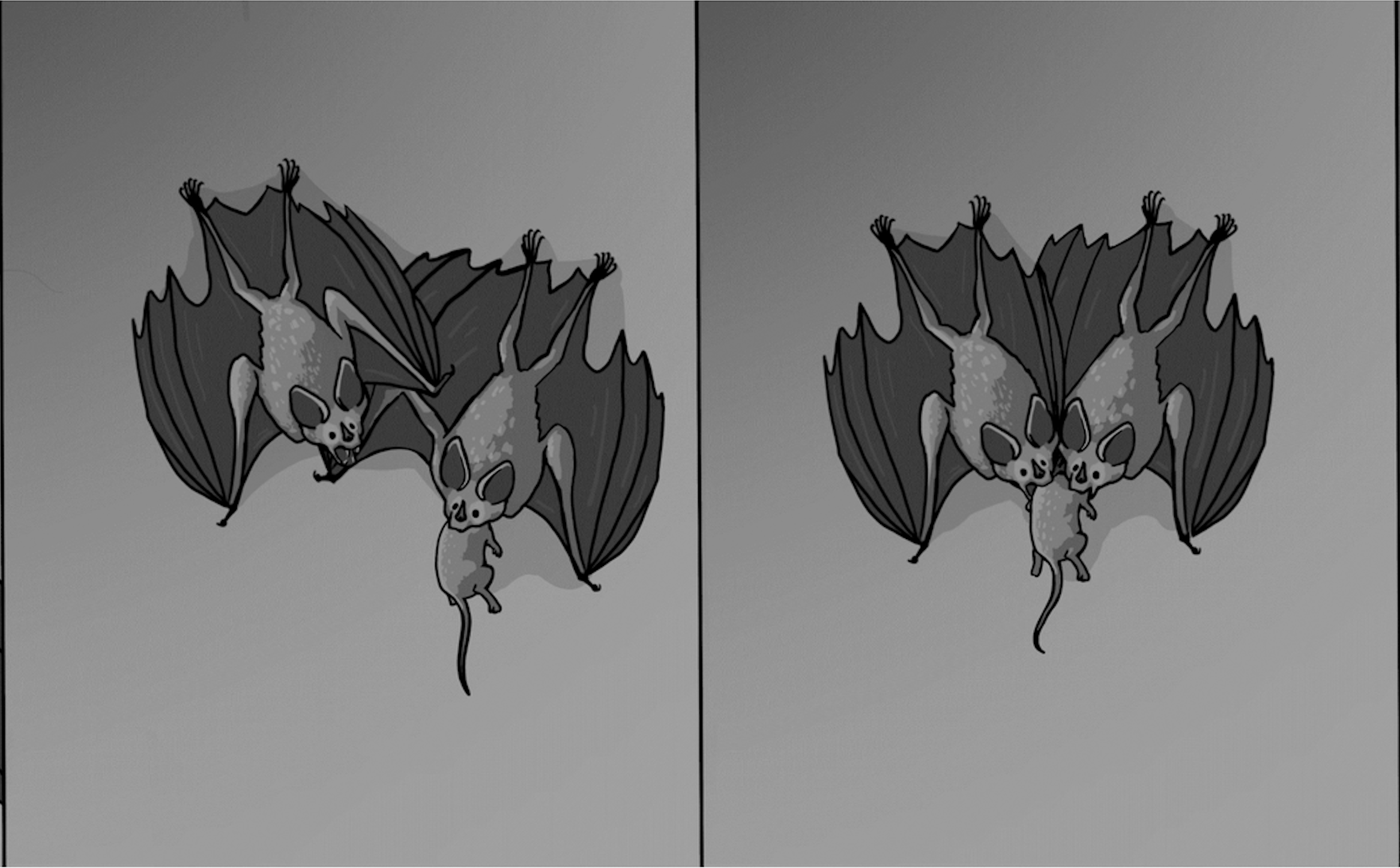By night, spectral bats leave their roost and swoop through the tree canopy of Costa Rica, wings outstretched as far as three feet wide, in search of prey: unsuspecting mice and rats, birds called motmots, even other bats. Sometimes, after they snag something good, they will fly back home with the doomed victim in their stalactite teeth and willingly give up a meal to another bat inside the roost. At the end of the day, the world's largest carnivorous bat is a rather cooperative creature.
This is one of several findings in a new paper recently published in the journal PLOS One, which analyzes footage taken from a single roost in the tropical dry forest of Guanacaste, Costa Rica. The roost in question is inside of the hollow trunk of a Manilkara chicle tree. Marisa Tietge, a behavioral ecologist at the Natural History Museum in Berlin, first found the roost in December 2022, when it held four spectral bats: a monogamous mated pair and their two pups. A year later, the researchers placed a wildlife camera inside the roost, which automatically recorded minute-long videos over the course of three months whenever the bats left the roost.
Within this footage, 73 videos capture a family of bats that is surprisingly social. Not only do the bats often pass a juicy rat between them, they greet and groom one other, play, and even sleep together in a behavior the researchers have dubbed—forgive the jargon—a "cuddle ball."

Most of the world's 1,480 species of bats are social, given their frequently cramped living quarters. As such, bats have evolved complex communication, such as the ability to distinguish the calls of bats they know from bats they don't. Many bats live in a society of their own making. (Some even live in a roost of their own making, such as the bat universally recognized as the cutest bat in the world. I am speaking, of course, of the fluffy white Honduran bats, which have banana-yellow ears, noses, and lips and each weigh as much as a postcard, and work together to build capacious tents out of leaves.) Most bats are non-monogamous, and some opt for harems, where a male bat defends a roost full of females from other males. But the rare, nearly threatened spectral bats are socially monogamous, which made the researchers even more interested in learning more about how they live.
Although an entrenched culture of monogamy can be toxic amongst humans, it is extremely cute in bats. Please enjoy the following footage of these blood-sucking critters assembling into the fearsome "cuddle ball."
Other footage captured the spectral bats playing. Some attempted to catch the pallid cockroaches scuttling up and down the trunk of their roost. But others played with each other in a kind of game extremely reminiscent of the way my two cats play with each other. Sure, there's a lot of biting and hitting, but everyone appears to be having a good time?
The researchers also captured two videos of spectral bat sex, which we have chosen to omit out of respect for this spectral bat family, which did not know they would be the subject of perhaps the first chiropteran version of The Real World. But the researchers did note that "this interaction often includes frequent position changes and licking of various lower body parts."
One of the researchers' favorite behaviors, what they call a "hug," appeared in four videos, and has never been recorded before in bats. Each time, a bat returning from a hunt was greeted by a homebody bat, which would approach the returnee and wrap their wings around them for several seconds and emit vocalizations. Please enjoy these illustrations of the hug—and the rat-sharing— included in the PLOS One paper.

If the above image is not clear enough about the tender, meaningful moment that two spectral bats share when passing a plump corpse of a rat from one mouth to another within the shroud of darkness that is their arboreal roost, do not fret. The researchers published another illustration that shows another angle of rat-sharing, and I've included it below for your viewing pleasure.

Twelve videos captured the bats sharing food with one other, often in the context of a parent bat passing prey to their pup. In almost every case, the bat calmly and voluntarily relinquished its catch to the other bat, displaying an openness of spirit and understanding of communal living that is still beyond the reach of many humans. (One video did reveal a brief tug-of-war over prey.)
This footage was particularly exciting, because scientists have scant evidence of bats sharing prey with each other, at least in the wild. Researchers studying captive Indian false vampire bats have observed mother bats giving whole or half-eaten frogs to their pups, and researchers studying captive lesser bulldog bats have observed mother feeding their pups with chewed fish and mealworms from their cheek pouches. But wild observations are growing. The ecologist Rodrigo Medellín has seen a big-eared woolly bat bringing prey back to the roost to share. And common big-eared bat mothers give their pups large insects for five months after they have been weaned, which scientists suspect help the young bats learn how to handle prey. The researchers believe the two spectral bat pups in the roost are about two-and-a-half and one-and-a-half years old, which would represent an unusually long period of bat parental care—a practice that likely stems from the bats' social monogamy.
So there you have it. Has the reign of the Honduran white bat come to an end? Until researchers can produce footage of those fluffy little creatures splooted together in a cuddle ball, it seems safe to say that their position as world's cutest bat may be under threat. The spectral bat may not be a looker, with its menacing teeth and unsettlingly large wingspan, but whose heart does not melt when presented with bats that hug each other when they come home? I'll go to bat for them.







